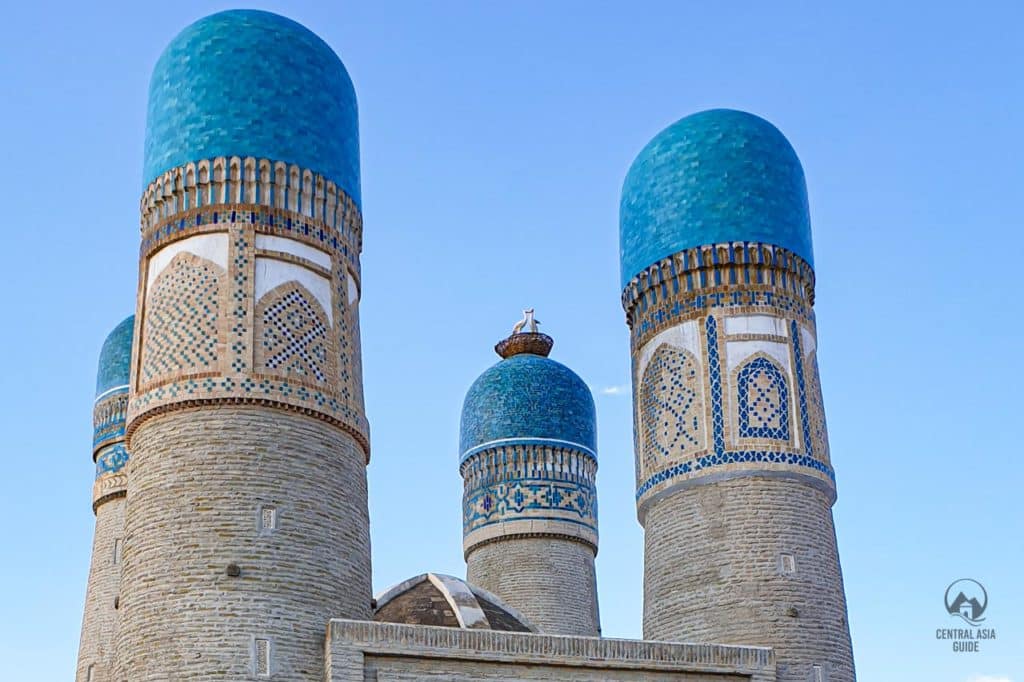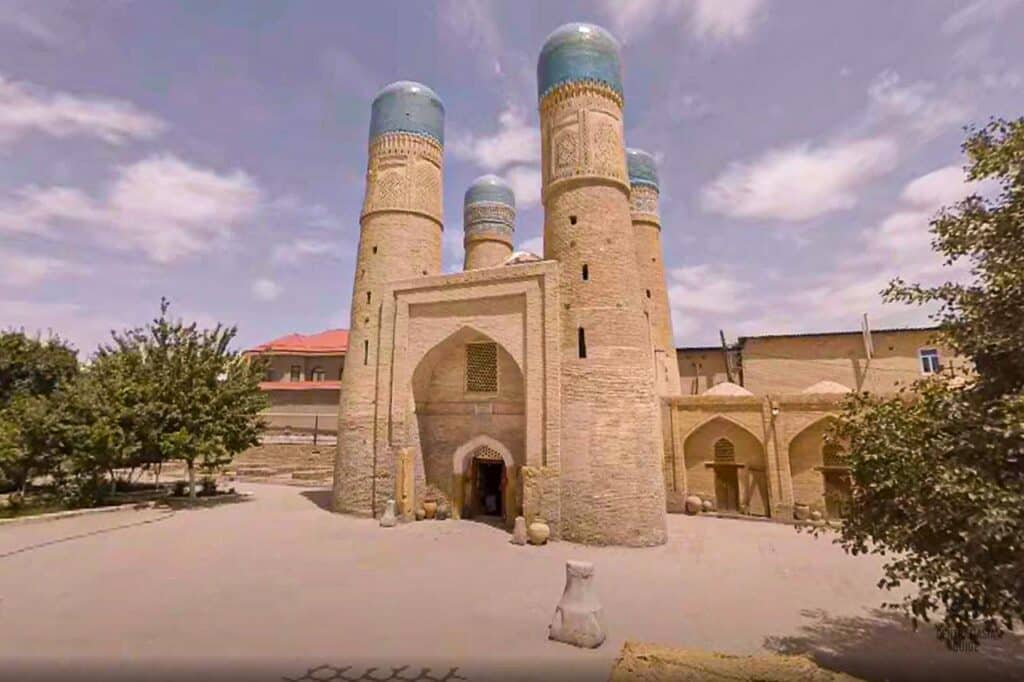Chor Minor Madrassa
Chor Minor Madrassa
“Chor–Minor” means “four minarets” and therefore the name certainly reflects the structure that has four small minarets topped by blue domes having varying decorations. Chor Minor is also known as the Madrasah of Khalif Niyaz-Kul, according to its builder who was a wealthy Bukharan of Turkmen origin in the 19th century under the rule of the Janid dynasty.
Khalif Niyaz-Kul hired architects and astronomers to build a madrassah following his sketches made on journeys to India, provided they would comply with two demands; first, to build the madrassah on the Great Silk Road so Turkmen caravans from Merv, Kesh (Shahrisabz), Karakul, and Alat could easily find the way to the building where they could seek shelter and relax and to make every visitor to the madrassah understand that people who lived in different parts of the world had only one sky above and stood equal before the one and only God.
Having its inspiration in India, Chor minor is very different from other old buildings in Bukhara ore even Central Asia. The famous Charminar (4 pillars in Urdu) gateway of Hyderabad has very likely served as inspiration for this building. Initially Chor Minor was a part of a larger complex of a madrasa that was destroyed.


Chor Minor stands fairly hidden and away from other sights in a path northeast of the Lyabi Hauz complex but still inside the old Bukhara city area. The four-towered structure is sometimes mistaken for a gate to the madrasa that once existed behind the structure. However, the Chor-Minar is a complex of buildings with two functions that are rituals and shelter. Despite its unusual outward shape, the building has a typical interior for a Central Asian mosque. Some believe that the four towers of the madrasah represent the four major world religions which could be true as if you observe closely some parts of the madrasah where you can see ornaments that are traditional for Buddhist religion (wheel) and Christianity (fish and crosses).
The four towers are united by one big dome – a symbol of heaven and God. Although the structure is rather compact, it looks strict and majestic. In 1998, one tower collapsed during an earthquake but it was later fixed by UNESCO and is nowadays included in their preservation list. The insides of Chor Minor have been turned into a souvenir shops reducing the authenticity but on the other hand there is no entrance fee. Some time ago it was still possible to get to the second floor but lately not any more.

